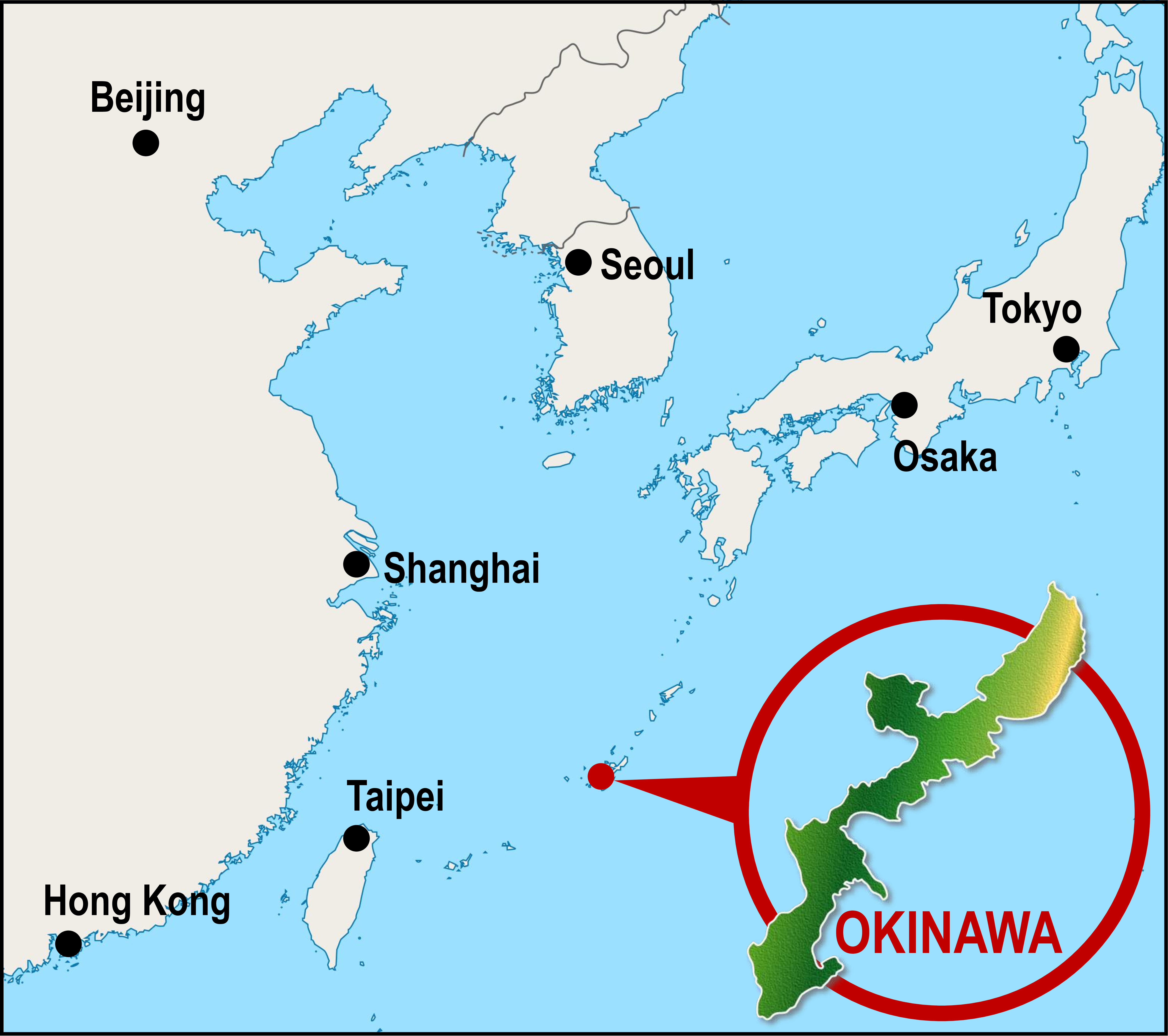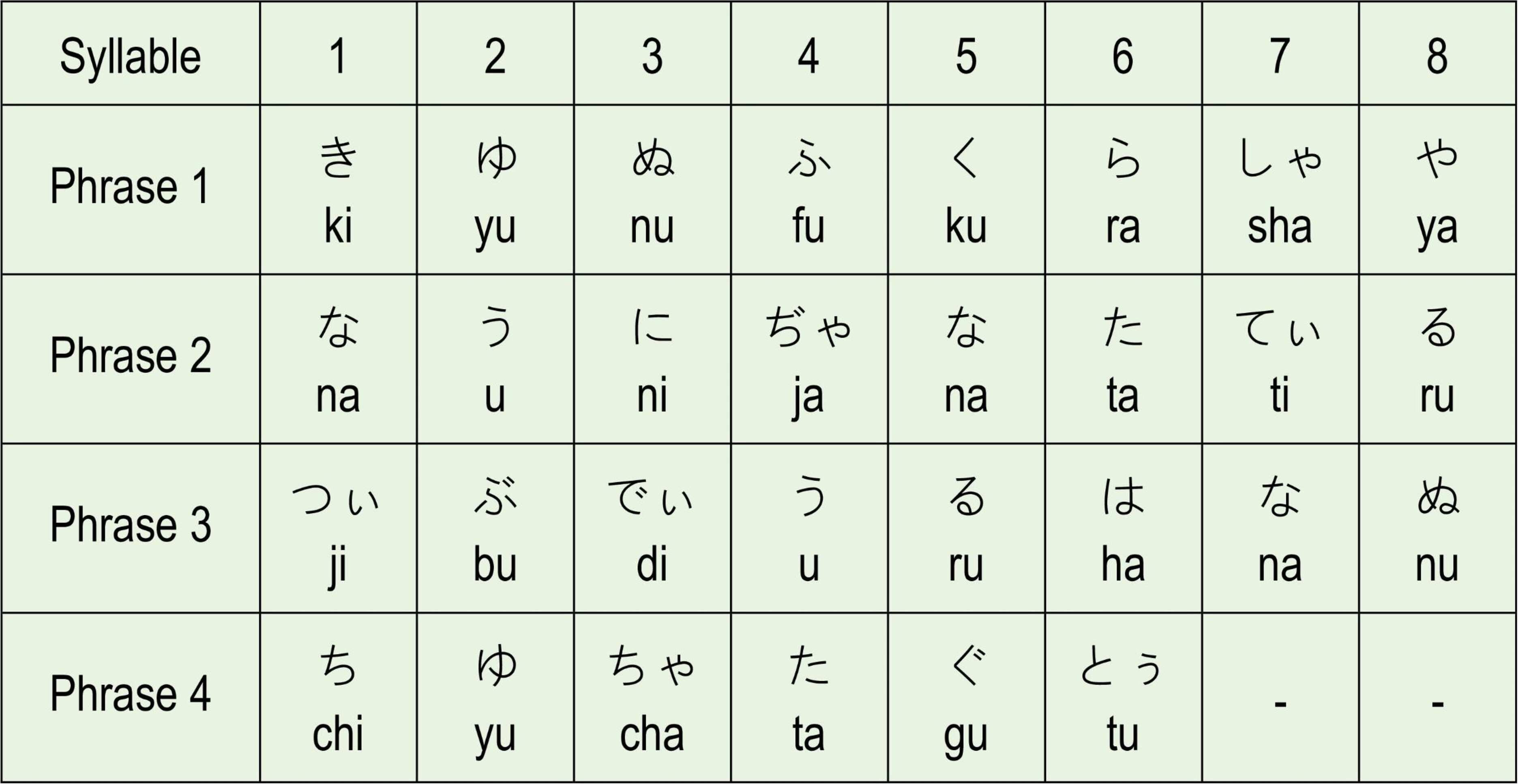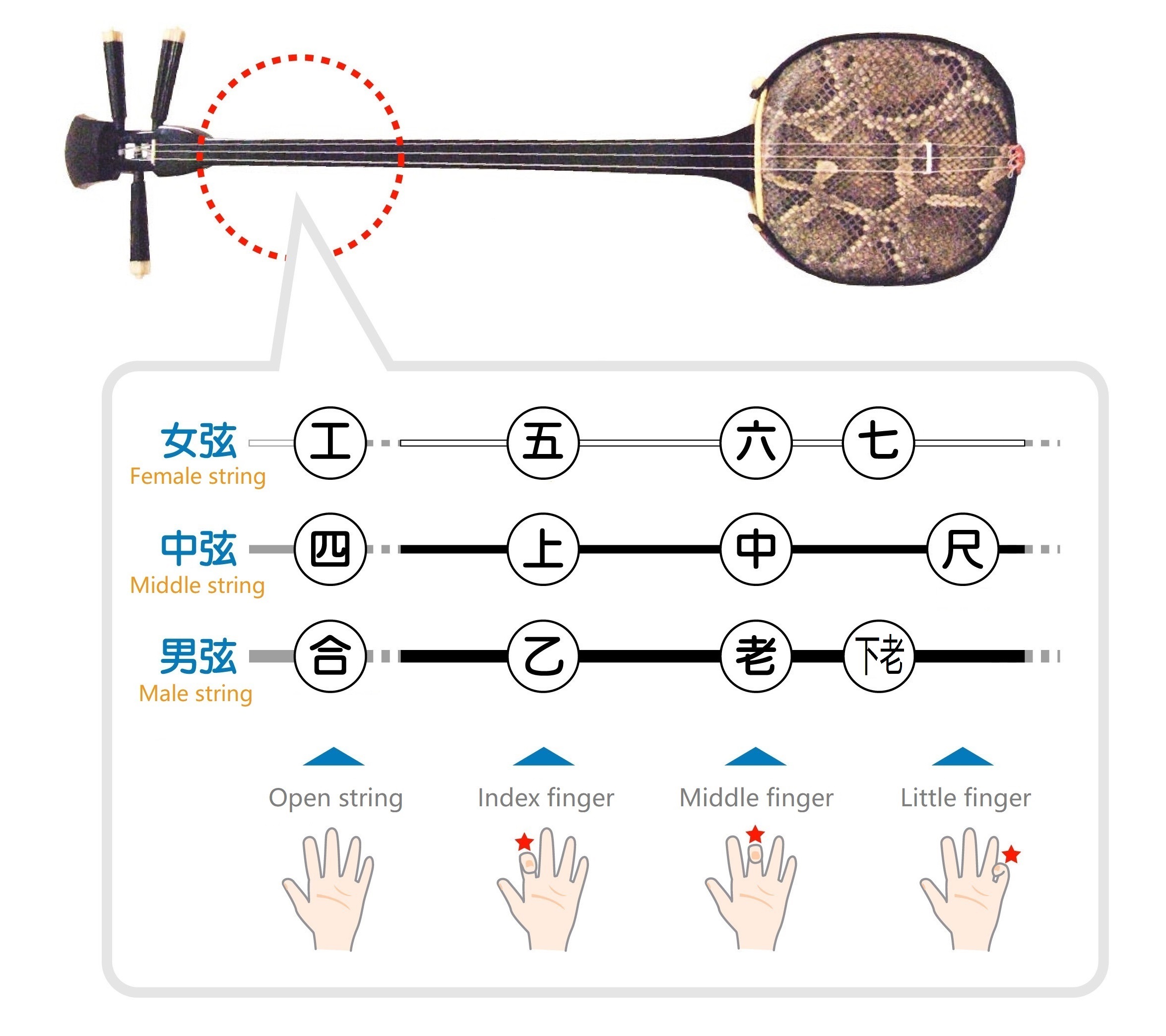Music Exhibition - Music of Okinawa
Text / Videos / Pictures: Nathanael Ling Ka-chun (PhD Candidate in Ethnomusicology, The Chinese University of Hong Kong)
 |
Explore more about the music of Okinawa through the illustrations and text below now! |
Introduction

|
Made up of Okinawa Main Island and surrounding small islands, Okinawa Islands – commonly referred to as “Okinawa” (沖繩) – is the largest archipelago amongst the Ryūkyū Islands. Being famous for its own natural scene, Okinawa is also rich in ethnic varieties. |
 [Image 1] Map of Okinawa |
|
As early as the 12th century, a castle with walls in Okinawa was built by leaders known as Aji, who strived for hegemony. In the 14th century, the whole area was divided and ruled by three major powers, ushering in the Sanzan Period, during which the rulers traded with and paid tribute to China in order to enhance economic strength. In 1429, Shō Hashi unified the three kingdoms and established the Ryūkyū Kingdom. In 1872, the Ryūkyū Kingdom was incorporated into Japan and “Ryūkyū Domain” was established. In 1879, the domain was renamed “Okinawa Prefecture”. During the Second World War, there was a large number of casualties in Okinawa. Having been occupied by the U.S. military after the war, Okinawa was returned to the Japanese sovereignty in 1972. |
|
Okinawa’s unique history and culture have been nurtured over a long period of history. Indeed, Okinawan culture is perceived as fascinating and exotic by many Japanese. Inspired by the history and its cultural heritage, traditional arts in Okinawa have evolved into different genres, including music, dance and drama. Most of them originated in the period of the Ryūkyū Kingdom, during which they were deeply influenced by Chinese and Japanese cultures. They have been passed down through various historical thresholds to the present day. |
Okinawan Music: Development and History

| Music of the Court: Ryūkyūan Classical Music |
|
In the era of the Ryūkyū Kingdom, the music played in the court was generally called “court music” or nowadays the Ryūkyūan “classical music”, mainly played by the sanshin (a three-stringed lute). Court music was also often used as the background music for various forms of dances, and was one of the most representative performing arts in the Ryūkyū Kingdom. In addition to the sanshin (lute), other instruments like kutu (zither), fue (flute), kūchō (fiddle) and tēku (drum) could also play solemn and elegant timbres. Earlier court music generally did not contain singing, and the melody would be played by the fue and the sanshin with an effect similar to the “polyphonic texture” in Western music. Starting from the Yuan Dynasty, particularly in the Ming and Qing Dynasties of China (i.e. Edo Period of Japan), cultural exchanges with China occurred due to tributes and some other political and economic reasons. Influenced by Chinese opera, court music gradually contained vocal parts and lyrics. |
|
[Video 1] Ryūkyūan Classical Music – Kagiyadefū Bushi and Binuchi Bushi |
| Voice of the Ryūkyū: Okinawan Folk Songs |
|
In the era of the Ryūkyū Kingdom, the music played in the court was generally called “court music” or nowadays the Ryūkyūan “classical music”, mainly played by the sanshin (a three-stringed lute).Following the end of the Ryūkyū Kingdom, court music began to disseminate among commoners and folk songs thus evolved. Many songs with rich emotions and compelling storylines had been created. Okinawan folk songs can be described as the “Voice of the Ryūkyū” as well as “popular folk songs” in the eyes of the indigenous people. Their life and stories, together with the voice of the “soul”, are often reflected in the lyrics. Yet, musical elements in the songs may vary among different islands and regions, and the indigenes still widely sing the songs nowadays. Before the Second World War, Okinawan folk songs were mainly sung in Uchināguchi (the Okinawan dialect). The three-stringed plucked instrument sanshin is the main character in folk songs. |
|
[Video 2] Okinawan Folk Song – Bashōfu |
| Change of Singing Language |
|
The Second World War made the islanders suffer from the Battle of Okinawa. Many local folk composers, through their music and lyrics, insinuated what happened during the war and expressed their dissatisfaction with the occupation of the U.S. military, as well as the appeal to the Japanese government for their national identity. A genre of “new folk songs” was gradually evolved, with lyrics written in the standard Japanese language, unveiling a new movement of Okinawan folk songs. |
| Modernity |
|
Under the influence of globalisation, Okinawan folk songs have adopted elements of popular music from Japan and the West, such as electronic music, harmony and chordal progression. Even so, in order to show the characteristics of Okinawa, the sanshin is still widely used for non-vocal melodies in Okinawan pop music, new arrangements and other Okinawan folk songs with modern colours. |
 [Image 2] Okinawan folk singers performing the sanshin in collaboration with other instrumentalists at the Music From Japan Festival 2014 |
Features of Okinawan Folk Songs

|
The main feature of Okinawan folk songs is the Ryūkyū scale, which is usually composed of five tones: do, mi, fa, sol, ti. The folk songs are popular on the Okinawa Islands, Miyako Islands and Yaeyama Islands of Okinawa Prefecture, as well as the Amami Islands of Kagoshima Prefecture. The songs are usually written in a form of short lyrical poems and made up of specific syllabic patterns. The lyrics are mixed with local dialects, revealing a unique artistic conception and ambience. Okinawan folk songs are still evolving, with new creations appearing from time to time. |
 [Image 3] Kagiyadefū Bushi is made up of specific syllabic patterns. The first three phrases each contain eight syllables, while the fourth phrase contains only six. |
The Core Musical Instrument – Sanshin

|
The sanshin is the most representative instrument in Okinawan music. It originated from the sanxian, a traditional Chinese musical instrument introduced to the Ryūkyū Islands at the end of the 14th century. At first, the sanshin was positioned as a court musical instrument. It was soon well received by the public and thus appeared in various festivals and folk performances. During the Eiroku Period (1558-1570), the sanshin was spread from Okinawa to Osaka, and then gained popularity in the main island of Japan. It was finally developed as a unique Japanese musical instrument – the shamisen. Sanshin literally means “three strings”. The strings, from high to low register, are called the female string, middle string and male string. The sanshin has a long and narrow fretless fingerboard that connects to a wooden soundbox covered with snakeskin. Players press the strings with the left hand and pluck the strings with a special bachi (a claw) held in the right hand. Generally speaking, the notes played on the three strings are:
|
 [Image 4] A simplified illustration on the sanshin left hand fingering |
|
The music notation for the sanshin is called kunkunshi, which is similar to the gongche notation for most traditional Chinese musical instruments. There are a series of squares in a score. A square is either filled with a character or circle to represent the corresponding musical note and a pause respectively. Unless otherwise instructed, the rhythm of each note is similar, and each specific note has its own specific fingering. In Okinawan music, rhythm is important, but how the notes are played and the timbres are far more crucial. The so-called playing method refers to the texts on the kunkunshi score that indicates where the player should press the strings. Because the key of each song may vary, the performer often tunes the three strings accordingly before playing. |
 [Image 5] Kunkunshi score of Tinsagu nu Hana (Balsam Flowers) with lyrics |
|
[Video 3] Tinsagu nu Hana (Balsam Flowers) |
Other Commonly Used Instruments

| Sanba |
|
Sanba literally means “three slabs”. As its name implies, the sanba consists of three wooden boards, which are connected by a small rope and sandwiched between fingers like castanets, making lively clicking sounds so as to make rhythm. Although the sanba has a simple construction, it is an indispensable accompaniment instrument in many Okinawan folk songs. |
|
[Video 4] Sanba : demo |
| Yotsudake |
|
Yotsudake literally means “four bamboo stems” and is also a musical instrument for making rhythm. The performer controls the yotsudake by holding a piece of bamboo that is broken into halves in both hands and produces sounds by beating them or slapping them together. It is easier to play than the sanba. Another difference between these instruments is that the former is mainly used in Ryūkyūan dance music, while the latter is commonly found in folk songs. |
|
[Video 5] Yotsudake : demo |
| Fue |
|
The fue, also called fansō or ryūteki, is a bamboo flute with a mouth hole and several finger holes. Though rarely used in the folk songs of Okinawa Main Island, its cooperation with the sanshin is commonly found in Ryūkyūan classical music and even folk songs of different islands like Yaeyama and Miyako. Because of its unique crisp and pleasant sounds, the fue is also one of the important instruments in Okinawan music. |
| Kutu |
|
Similar to the sanshin, the kutu (zither) was a localised version of Chinese zheng in the Ryūkyū Kingdom before spreading to the main island of Japan (as the koto). The kutu musicians were highly regarded in the imperial court. Following the establishment of the Okinawa Prefecture, commoners began to come into contact with this instrument. The kutu, often called Ryūkyū sō or Okinawa goto, has undergone certain changes during Ryūkyū’s cultural purge. While the koto with different numbers of strings have evolved, most of the kutu still retain 13 strings. Traditionally, the kutu was never played in solo form. It was usually played with other instruments such as the sanshin and fue on special occasions like the New Year Festival. When the sanshin and fue played the melody of Ryūkyūan classical music, the kutu served as their supporting instrument. |
| Kūchō |
|
Although the origin of the kūchō has not yet been determined, scholars generally believe that it was originated from China like other Ryūkyūan musical instruments. But unlike the sanshin, the kūchō was first introduced to the main island of Japan from China, and then further developed on the Ryūkyū Islands. Documents about this instrument can be traced back to the early Edo Period (i.e. the 17th century). It was played and passed down by blind musicians at that time. A kūchō usually has three to four strings. Same as the violin, the kūchō is played by drawing a bow across its strings, but the performer needs to continuously rotate the instrument body when playing. |
| Shima Tēku |
|
In addition to the sanshin, drums are also very important in Okinawan music. Drums with different sizes create distinct rhythmic patterns that drive the atmosphere, especially during dances, feasts and festivals. Because every island has its own unique drums, which vary in shape and size, these drums are called shima tēku (literally “island drums”). Below are the three most common types of shima tēku:
The hiradō tēku / ōdēkū and the shime tēku are double-sided drums, while the pārankū is a single-sided drum. |
|
[Video 6] Fue, Kutu, Kūchō & Shima Tēku : demo |
Okinawan Music in Other Art Forms

|
Music also frequently appears in other forms of Okinawan traditional performing arts. Below is a brief introduction. |
|
1. Ryūkyūan Dance
Ryūkyūan dance is accompanied by songs and musical instruments. The performers’ singing tone and choreography are the essence of the whole performance. The performers are always male and they use different tones for different roles. For examples:
|
|
[Video 7] Ryūkyūan Dance |
|
2. Kumiodori Musical features of kumiodori include:
|
|
[Video 8] Nidō Tekiuchi (The Vendetta of the Two Sons) [also known as “Gosamaru Enemy”] |
|
3. Okinawan Drama
Unlike traditional Ryūkyūan dance and kumiodori, Okinawan drama features a more relaxed style without specific groups of accompaniment instruments. |
|
[Video 9] Dialectic Drama Watanabe Monogatari |
|
4. Celebration Dance i) Eisā |
|
[Video 10] The Eisā Dance |
|
ii) Shishimai (Lion Dance) |
|
[Video 11] Shishimai (Lion Dance) |
Conclusion

|
Okinawan music does not only embrace an exotic countenance, but also incorporates a wide range of elements over the course of time. Under the governance of different dynasties and regimes, Okinawan music has become richer and more colourful. From traditional court music to Okinawan folk songs, kumiodori to different folk arts, all categories are inextricably linked and echo one another, contributing to the unique charm of Okinawa. |








